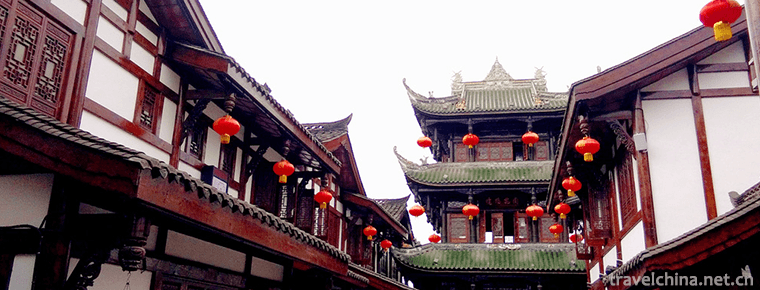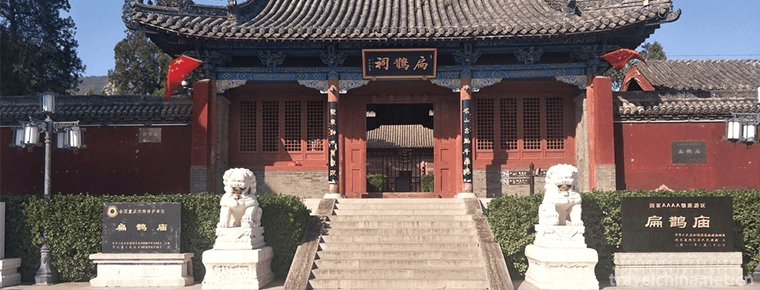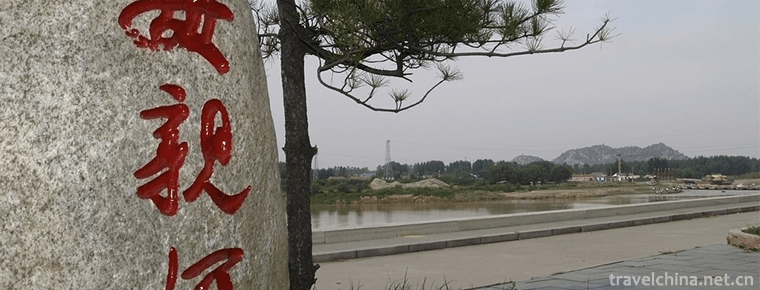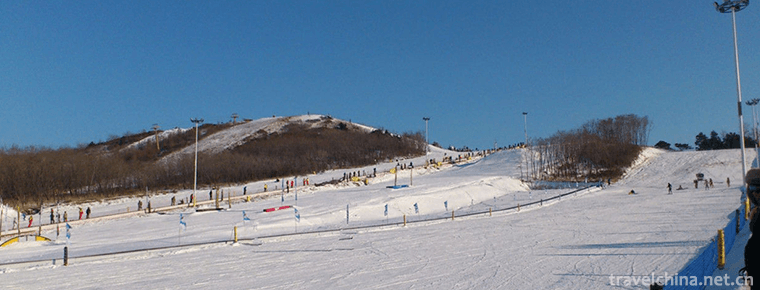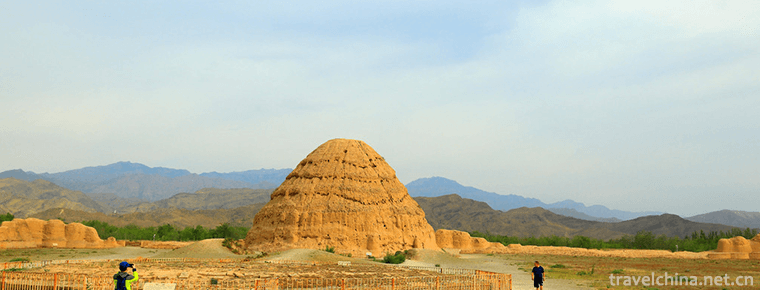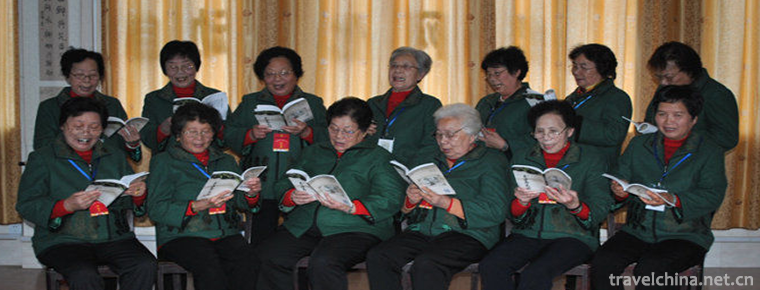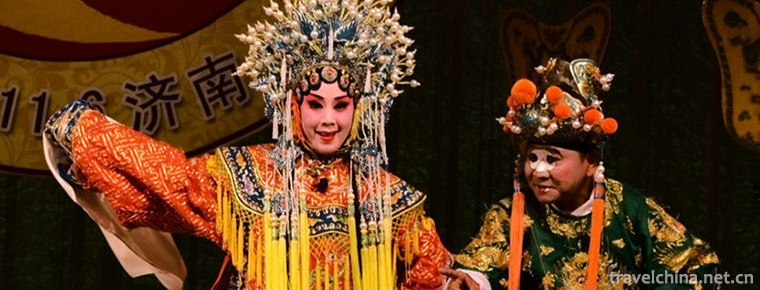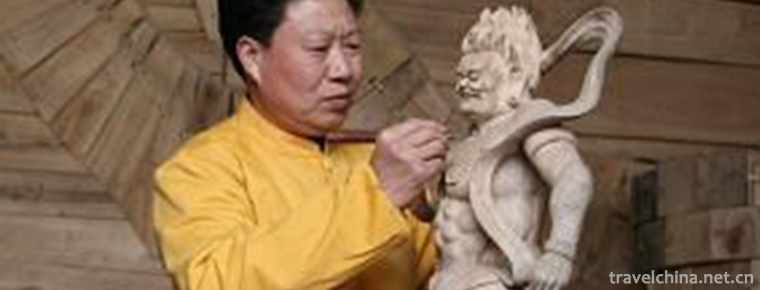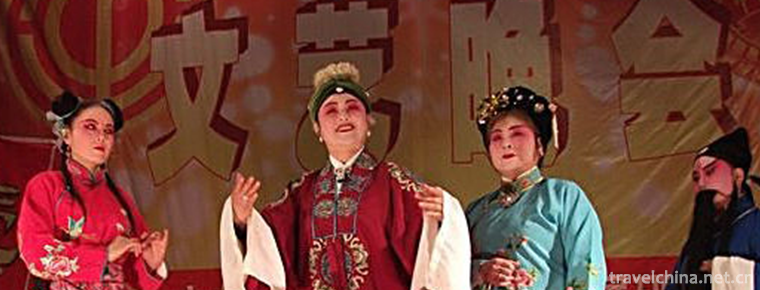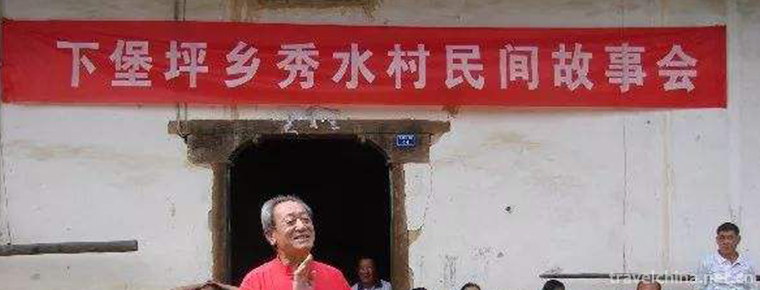Shennong Mountain Scenic Area
Shennong Mountain Scenic Area is a national AAAAA-level tourist area, located in Zhaozhai Village, Ziling Town, Qinyang City, Jiaozuo City, Henan Province, 25 kilometers northwest of the Taihang Mountains at the junction with Dihe Village, Shanhe Town, Zezhou County, Jincheng City. There are 8 scenic spots, 136 scenic spots and 28 peaks of Jiushan and Lianghe. According to legend, Shennong Mountain was a place where the Yandi tribe had frequent activities in ancient times. Shennong had set up altars to worship the heavens here, and Shennong Mountain was named for it.
In January 2016, it was criticized by Henan Tourism Scenic Area Quality Grade Assessment Committee and rectified within a time limit .
Historical evolution
In ancient times, Emperor Yan Shennong set up an altar here to offer sacrifices to heaven.
Wei Hua, a female Taoist monk in the Western Jin Dynasty, lived there for 42 years. He wrote Huangting Jing, one of the four heavenly books, and founded the Taoist Upper Qing School.
Thick Chan, a prominent monk in the Northern Wei Dynasty, excavated cliff carvings in Taiping Temple and built Yunyang Temple, Linchuan Temple, Taiping Temple and Mujian Temple.
geographical environment
geographical position
Located at the southern foot of Taihang Mountain, 25 kilometers northwest of the junction of Zhaozhai Village, Ziling Town, Qinyang City, Jiaozuo City, Henan Province, and Dihe Village, Shanhe Town, Zezhou County, Jincheng City, with longitude 112,82462 and latitude 35,213855.
topographic features
Shennong Mountain Scenic Spot is located in the front of the south of Taihang Mountains, the whole terrain is high in the north and low in the south, and the altitude is between 250 and 1116.9 meters. The mountains are steep, with many strange peaks, ravines and diverse habitats. Due to geological tectonic movement, long-term erosion and cutting of flowing water and lime leaching, many cliffs, deep valleys and natural caves were formed. The Valley is deep and visible at a height of 100 meters from the cliff. The deep valley has no sunshine all the year round. It is gloomy and pressing. The whole terrain can be divided into three types: first, the dangerous slope cliff zone, which distributes along 1-2 km south of Taihang Mountains, rises suddenly from 200 meters above sea level to 700-800 meters, with a slope of 45-90 degrees, bare rocks, barren soil, sparse vegetation, mostly dangerous slope cliffs, which are difficult for people to climb. The second is the dangerous slope buffer zone, which is between 700 and 900 meters above sea level. It is called the second station. The slope is about 20 degrees. The soil layer is deep and the plants grow well. Thirdly, the gentle flat zone on the top of the mountain has a large area, a gentle and open terrain, forming many small flat land and small basins, with good water conditions, mostly acid soil, suitable for the growth of a variety of plants.
Climatic characteristics
Shennongshan Scenic Spot is a warm temperate continental climate with distinct seasons, arid and windy spring, hot and rainy summer, warm and cool autumn day and night, and cold and dry winter. The average annual temperature is 14.3 degree C. The highest temperature is 42.1 degree C and the lowest temperature is - 18.6 degree C. The change of seasonal temperature is obvious. The average temperature in spring is 14.7 degrees C, in summer is 26.4 degrees C, in autumn is 14.6 degrees C, and in winter is 1.3 degrees C. The annual average precipitation is 576.5 mm, of which the winter precipitation is the least, the average precipitation is 28.1 mm, accounting for 4.9% of the year; the spring precipitation is slightly more, the average precipitation is 100.0 mm, accounting for 17.3% of the year; the autumn precipitation is more, the average precipitation is 147.3 mm, accounting for 25.6% of the year; the summer precipitation is the most, the average precipitation is 301.1 mm, accounting for 52.2% of the year; the annual maximum precipitation is 1101.1 mm, the minimum drop. The amount of water is 262.9 mm. The precipitation mostly concentrates in July, August and September. The intensity of precipitation is high, which often causes floods. The average year is 210 days without frost. There is plenty of sunshine and rain.
Main scenic spots
Yunyang River Scenic Area
Yunyang Zhai
Yunyang Zhai was rebuilt in Sui and Tang Dynasties. It was renovated in all dynasties. The gate of the village was built of bluestone and the top of it was stacked with stones. In ancient times, Yunyang Village was a dangerous gateway for communication between Henan and Jin provinces, and it was an inevitable place for military strategists of all dynasties. It was called "Meng Men" in ancient times and was established in the Spring and Autumn Period and the Warring States Period.
When visiting Shennong Mountain, Emperor Li Longji of Tang Dynasty wrote a poem named "The Story of Early Climbing to Taihang Mountain". The poem "White Fog Buries Shadows, Danxia Helps Xiaoguang" brings endless reverie about the love of "White Cloud" and "Chaoyang".
At the end of Ming Dynasty, Wang Duo, a great calligrapher, praised in his poem "Huaizhou hangs the ancients": "In the north, there are mountains and mountains, arched Mengmen, and the wild King forms the mixture of Qin River and Qin River."
In 1702, Emperor Kangxi came and gave the name "Yunyang Village".
Quiet Palace
The Qingjing Palace was built in 1750 A.D. (the fifteenth year of Qianlong in the Qing Dynasty), which is the only girderless building complex left over from China in the Qing Dynasty. It is situated in the north and south, built according to the mountains, with three imperial pavilions in the middle, the Queen Mother's Palace in the left and the Jade Emperor's Pavilion in the right, all of which are double-storey pavilions. Its most special feature is that it breaks the symmetrical architectural pattern of Buddhist temples and Taoism in the architectural style, combines the Eastern caves with the western pavilions, and draws materials from them all are stone, which can be regarded as a unique ancient building in the Central Plains.
Shennong Cultural Square
To commemorate the achievements of Emperor Yan Shennong, a pure copper statue of Shennong, which is 9.9 meters high and weighs 29 tons, is situated 200 meters in the scenic area and sits in the center of the square. The whole square is divided into three layers, which implies three boundaries of heaven, earth and people. The main altar has four steps to enter the altar. It implies four seasons a year. There are 12 reliefs around the altar telling the story of Emperor Yan. It implies 12 months a year. The altar road at the bottom of the altar has 24 circles, which implies 24 solar terms. Each circle is paved with 365 bluestones, implying 365 days a year. The eight spiritual animals around the altar are Qinglong, Shenma, Suzaku, Tiger, Bird, White Tiger, Shenniu and Xuanwu, which are legendary created by Shennong. They guard all sides, adjust Yin and Yang, and follow Feng Shui.
Cai Zu Temple
Emperor Yan Shennong was the first person to create wealth for the Chinese nation. He taught people to cultivate, initiated Chinese farming civilization, created material wealth for the primitive ancestors, and initiated trading in Shennong Mountain. He was the first person to create wealth for the Chinese nation, and was respected as the "God of Wealth" by later generations. So far, tourists have said that "worship Shennong, the grain is abundant and the business is flourishing".
Medical ancestral temple
Emperor Yan tasted hundreds of herbs in Shennong Mountain, propagated medicines to cure diseases and cured people. He initiated the origin of Chinese medicine and was regarded as the founder of Chinese medicine. Today, people build temples to commemorate it. So far, tourists have the saying that "worship Shennong, eliminate all illnesses, and live a safe life".
Tallinn, Yunyang
Located on the third stage platform of Yunyang River Valley on the east side of Yunyang Temple, it is the tomb tower of the funeral bones buried by the monks of Yunyang Temple after their death. There are seven original pagodas and five existing ones, all of which are dense eaves and Shang Pagodas. Among them, there are two Yuan Pagodas, one Ming Pagoda and two Restoration Pagodas. The "ordinary pagoda" of the Yuan Dynasty was built for the joint burial of many monks, which was rare.
Wind and rain stone
A weathered, vicissitudes of life orphan stone, stone covered with vertical stripes, like the skin cracked by the wind, According to the local elderly, it is a strange stone to know the wind, know the rain and forecast the weather. Therefore, there is also a proverb: "Up the mountain, touch the wet and dry, it dares to dry, it turns wet."
Yunyang Temple
Yunyang Temple was built in the Tang Dynasty, formerly known as Shousheng Temple. In the first year of the Yuan Dynasty, that is, in 1260 AD, Shengguo Temple was built. There are four existing buildings: the mountain gate, the four heavenly palaces, the three Western temples, and the Daxiong Palace. In the northeast direction of the monastery, there are three square brick towers with dense eaves. The tower is 4-6 meters high and imitates the style of the Tang Dynasty. They are built in the Yuan, Ming and Qing dynasties respectively. There is only one wall between Yunyang Temple (Buddhism) and Qingjing Palace (Taoism). It is a very rare place where Buddhism and Taoism co-prosper in China. With the help of the mountain situation, the four groups of buildings are arranged on the four platforms with a height difference of 5 meters, and the total building area reached more than 20,000 square meters in the heyday. In 1982, the people's government of Qinyang announced the Yunyang Temple as a key cultural relic protection unit. In the first year of Zhongtong (1260), the Record of Restoration of the Monastery said: "The mountain is called Yunyang, and the temple is called Shousheng, living in the mountains. Four groups of peaks, Ganquan upwelling, southwest barn, down to the northeast. Right next to the top of purple and gold, Yangzhan Baiyu Qin, Zhenlan Ruobaofang also. The Qing Dynasty changed its name to Yunyang Temple.
Macaque Garden
Rhesus monkey garden is the most concentrated area of Taihang macaque in Shennong Mountain, which is the second kind of rare wild protected animal in China. It is also the best base for enjoying and studying wild Taihang macaques. In Han Yu's poem Tinxi Baijian, he once described the Yunyang Mountain macaque monkey: "The apes see that they have gone through a cliff, and the green peak looks at Fraulein in vain. Sonny birds fly behind their backs, so they never know each other."
Ancestor peak
Located behind the Medical Ancestor Temple, it is not only like a huge stone, but also a mountain peak, rising flat and standing tall, showing a kind of masculine beauty. Because Emperor Yan Shennong and Emperor Huang Xuanyuan were both called the ancestors of Chinese humanities, they were named the ancestor peak.
Wang Mu Dong
It was rebuilt from five natural caves. It was excavated in Tang Dynasty and renovated in Ming Dynasty. Inside the cave, there are inscriptions of "Emperor Ming Zongshi" and "Zheng Fan Books". In modern times, glazed tiles were used to cover the roof. There is "East China Sea Spring Eye" under the Wangmu Cave. The spring water is sweet and delicious, and it does not dry up all the year round.
Immortal Valley Scenic Area
Jing Ying Lake
Jingying Lake (formerly Xianshen Lake) is located at the mouth of Xianshen River (Valley). Its water resources come from thousands of large and small gullies within 80 miles of Xianshen River. The lake is blue and sparkling. Looking to the north, there is a blue arc stretching from north to south along the winding mountain trend. It is called the "Dragon" immortal river of Baili Gorge.
Jing Ying Temple
Built in the Tang Dynasty, it was renewed in the Song, Yuan, Ming and Qing dynasties. It is a Taoist holy place, hundreds of meters deep and nearly a hundred meters wide. There are five gates in front, followed by Bell and drum tower, theatre tower, nine pavilions in East and west, and then Zixu Yuanjun Palace in the light, seven shadows and nine shadows. In the Northern Song Dynasty, Huizong bestowed Quiet Ying Temple.
Taiping Temple Cliff Stone Carvings
In the Northern Wei Dynasty, temples were built here, and statues were excavated, called "Thousand Buddha Rocks". In the Sui and Tang Dynasties, grotto-opening statues reached their peak. In the Five Dynasties and in the Jin, Ming and Qing Dynasties, diamond Sutras were copied and grotto niches were continued. There are six niches in three caves, among which the Buddha's name is inscribed beside the Buddha statues in the Thousand Buddha Cave. The stone carved Lotus Sutra in the late Jin Dynasty, visitor inscriptions in the Song and Jin Dynasties, monastery sites in the Ming and Qing Dynasties, and more than 20 inscriptions can also be appreciated as a precious historical relic of the Thousand Buddha Cave. The opening of Qianfo Cave faces south. It is 2.8 meters wide in East and west, 2.3 meters deep in South and north. It is 2 meters high and has a curved top. There are 1012 Buddhas carved on the cave wall. Each of them has Buddha's name in different postures. Thousand Buddha Cave is a precious relic left by Buddhist culture in China, which is known as the "Little Dragon Gate" in North Henan.
Mu Jian Temple
Located on the West Bank of Xianshen River, 1 kilometer north of Erxian Temple, Mujian Temple is situated in the north and south. During the reign of Zhenguan in Tang Dynasty, the famous monks of Emperor Erhou were established solemnly. The original name is Gongchan Temple. The East and West are 30 meters wide and more than 100 meters deep, covering an area of more than 4600 square meters. There are Buddhist temples in the temple. There are 16 buildings in front, middle and rear halls, and 3 in back Zhou Dynasty, Song Dynasty and Jinshi Dynasty. In front of Mujian Temple, there is a platform more than 40 meters long in East and west, 20 meters wide in North and south. On the platform, there are lush forests and 36 inscriptions on the East side. On the right side stands the inscription of the Golden Pile Front Hall of Mujian Temple and the four links of Pushi in the thirty-second year of Qianlong reign (1767). The front hall has three broad rooms and three deep rooms. There is a memorial of the hall before and after Guangxu's eleventh year of construction. The front hall has brick and stone cave enlarged oh-style structure, right said "Peach Blossom Cave". On the right column is inscribed the inscription of the 23-year construction of Jiajing in the Ming Dynasty. Entering the second-level platform, there are stone-built holy water pavilions. On the left of the pavilion, there are eight years of Ming orthodoxy "Rebuilding Mujian Temple and Statue Record" stone tablets. On the right, there are six years of "Rebuilding Holy Water Pavilion Record" tablets. The Chinese Buddha Hall has five broad faces and two deep ones. It has stone vertical roofs and gold pillars with octagonal pillars. There are six buildings on the three-tier platform, such as the Houfodian. On the left side of the hall, there is a handwritten stele, about 3 meters high. The cursive script, written by Wang Duo, a famous calligrapher in Ming Dynasty, is a treasure in stone carvings. Mujian Temple is located in a famous mountain, beautiful environment, holy water springs, Chuanliu Temple, bamboo trees and flowers on both sides of the shade, and then the mountains stand. West Stone Owl is 1.5 kilometers southwest of it. West Stone Urn is located at the end of the mountain, round, up and down, visitors here, such as in the urn, hence the name. There are inscriptions on the walls since the Tang Dynasty. At the junction of Jianjian and Xianshen River, there are Mingyu Pavilion and Daoguang's five-year record: "Tang Mingyu Pavilion, three seal characters, no years and months, four feet and three inches high, one foot and three inches wide, Mujianshan in Hanoi". Mujian Temple is a scenic spot of Buddhism and Taoism since Tang Dynasty. There are many inscriptions on stone inscriptions. It has high historical value and is a scenic spot with unique beautiful and secluded style. In 1982, the people's government of Qinyang City announced that it was a key cultural relic protection unit.
Real Valley Temple
At the end of the narrow valley. The whole mountain body in the narrow valley is limestone. Looking up, it's almost vertical, up to about 300 meters. Overlooking the valley is 100 meters deep, and at the end of the valley there is a flat ground about 50 meters wide. In the Sui and Qing Dynasties, and even in the Republic of China, Narrow Gully has always been the center of Buddhist and Taoist activities. Since the establishment of Taiping Cliff Temple in Sui Dynasty, with the replacement of the dynasty, the temple has been thriving and abandoning several times, and has changed its name to Kaihua Temple, Zhenggu Temple and so on. In this limited space, there are many Buddhist statues, cliffs and grottoes in Sui and Tang Dynasties, stone carvings of lotus blossoms and gold in the later Jin Dynasty, tourists'inscriptions in the Song and Jin Dynasties, monastery sites in the Ming and Qing Dynasties and more than 20 stone inscriptions. Hanoi County Chronicle records this place, "Ten miles west of the city, also known as Yuangu, now known as Zhenggu Temple." As long as the Buddhist relics in Narrow Jianyuan Valley are statues of cliffs and grottoes along the mountain walls, there are six imaginary niches, two unfinished niches, one thousand Buddha cave, two grottoes, eight inscriptions of statues and one Scripture carved on the cliffs. Mainly works of Sui and Tang Dynasty. There are also several inscriptions of tourists in the Song, Jin and Yuan Dynasties, among which the most valuable relics are the Thousand Buddha Cave and the lined Buddha Pagoda. There are fewer Taoist relics. Wei Huacun (Erxian Grandma), the founder of Taoism, was founded in Tang Dynasty and renewed in Song, Yuan, Ming and Qing Dynasties. It is recorded that Li Yuan and Li Shimin of Tang Dynasty made an imperial edict to build it, and Huizong of Song Dynasty named it Jingying Temple. Jingying Temple archway carving fine, smooth lines, vivid shape, especially inverted dragon holding pillar stone, is a very rare treasure in ancient architectural stone carving works of art.
West stone urn
Situated in the west of Jingying Temple and at the end of Mujian Valley in Yangluo Mountain, Xishiweng is hundreds of meters high. The mountains are tilted down from north, West and south, respectively. The center of Xishiweng receives the abdomen, forming the upper barrier, the lower masonry and the big stone Weng in the shape of Weng's abdomen. It is the largest Tianshui Waterfall wonder (seasonal) in Xianshen Valley.
Ten miles Gallery
Shili Gallery Gallery is 5 kilometers long, with lush trees and fragrant wild flowers on both sides of the valley; strange peaks and rocks, various forms, like a giant landscape painting scroll, and so on, there are still many good sentences such as "people travel in the valley, just like a picture" and so on.
Linchuan Mountain Scenic Area
Linchuan Temple
Linchuan Temple is also known as Longquan Temple, commonly known as Laolonggou. The monastery is situated at the foot of a thousand feet cliff and is named for facing Hirakawa. Founded in the Han and Jin Dynasties, the temple has a history of nearly 1700 years. Song, Yuan, Ming and Qing dynasties have been renovated many times, covering an area of more than 6,000 square meters. There are seven buildings, including the Great Buddha Hall, the Sanpeng Pavilion, the Longguan Temple, the Chaoyang Cave and the Xuan Tian Yunu Cave.
Shennong Grand Canyon
Shennong Grand Canyon has a huge peak, deep and thousands of feet, overlooking the bottom of the canyon, magnificent and vigorous, looking at the panorama
Heaven on earth
The sky on earth is just like a too illusory mirror. The blue wind is beautiful, the heroic wind is detached, the form is magnificent and dangerous. Taixu Ling Feng's magnificent momentum makes people feel fascinated. Some poets leave a message: here can only be found in the sky, but in human dreams for several times.
Paraquat slope
Baicao Slope is located on the west side of Tianmen, where there are more than 100 kinds of valuable medicinal materials, such as ginseng, Platycodon grandiflorum, yam, rehmannia, chrysanthemum, Ganoderma lucidum and so on. It is the place where Shennong tastes Baicao Slope, so it is named Baicao Slope.
Huanghualing Scenic Area
Closed Doors Village
Originally named Fengmen Village, it is located in Huanghualing Leisure Resort, Shennong Mountain Scenic Area. The village is surrounded by mountains and built on them. A small river passes in front of the village. Hundreds of buildings of Ming and Qing dynasties are situated in the deep mountains and old forests. The houses in the village are ingeniously built on terrain and artificial foundations. The dense area can reach two square meters and one person. Most of the buildings are made of wood and stone. The East-West trend is toward the three-storey building. The roof of the building is all grey tiles. Bridge-type buildings connect the houses together to form a structure pattern of interconnected houses. The whole village has been relocated, with about 29 houses and more than 200 houses. Some outdoor clubs and adventure enthusiasts have come into Fengmen village many times to explore the secret of Fengmen village. During this process, some strange events such as the failure of compass and the rotation of Taishi chair have taken place. The entrants will have hallucinations and hallucinations, which make Fengmen village have the reputation of "the first ghost village in China".







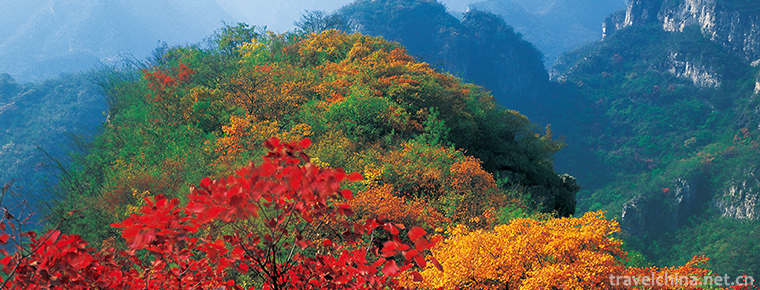
-
The AncientCity of Lang Zhong
Langzhong Ancient City is a national AAAAA-level tourist attraction, a thousand-year-old county, the hometown of Chinese Spring Festival culture, one of the four ancient cities in China..
Views: 166 Time 2018-12-12 -
Bian Que Temple Tourist Area
Bian Que Temple, also known as Bian Que Temple, is situated at the foot of Que Mountain, 26 kilometers west of Neiqiu County Town. It is an ancient building group to worship and worship the Chinese me.
Views: 101 Time 2019-01-03 -
Jinan Baili Yellow River Scenic Area
Jinan Baili Yellow River Scenic Area is adjacent to the northern part of Jinan City. The south gate of the Scenic Area is directly connected to Jinan City's central axis - Jilu Road.
Views: 78 Time 2019-01-20 -
Shenyang Weipo Skiing Ground
Shenyang Qiaopo International Skiing Resort is located in AAAA Scenic Area of Qiaopo in Shenyang, which is surrounded by mountains in the northeast direction and boundless forest sea..
Views: 225 Time 2019-02-08 -
Western Xia imperial tombs
The Mausoleum of the Xixia Dynasty, also known as the mausoleum of the Xixia Emperor and the mausoleum of the Xixia Emperor, is the mausoleum of the successive emperors and the Royal Mausoleum of the .
Views: 107 Time 2019-02-25 -
Song Album
"Dongshan Song Book" was introduced from Chaozhou, Guangdong Province, in the Ming Dynasty. Its tunes were constantly changing in the singing of folk singers and gradually assimilated.
Views: 164 Time 2019-04-30 -
Roast duck skills
Quanjude hanging oven roast duck is a local traditional handicraft in Beijing. Quanjude Roast Duck Restaurant, a well-known old Chinese brand in Beijing, was founded in 1864 by Yang Quanren..
Views: 192 Time 2019-05-08 -
Shangdong clapper opera
Shandong Bangzi is a traditional local opera popular in Southwest Shandong and Central Shandong. Also known as "high-profile Bangzi", short for "high-profile" or "high-profile.
Views: 191 Time 2019-06-13 -
Skills of Dry Lacquer and Ramie in Tiantai Mountains
As early as the Eastern Jin Dynasty, dry lacquer and ramie had been used in Tiantai folk. Through the continuous efforts of the substitute craftsmen, their skills gradually matured. In the mid-Tang Dy.
Views: 195 Time 2019-06-21 -
Xihe Opera
Xihe Opera, also known as Xingzi Xihe Opera, is a traditional opera popular in Xingzi, De'an and Jiujiang counties and cities of Jiangxi Province. Its main vocal cavity is Pihuang, also known as ".
Views: 124 Time 2019-07-01 -
Xiabaoping Folk Stories
There are many original ecological works of Xiabaoping folk tales, which have distinct local characteristics and high cultural taste. It is the epitome of the traditional folk literature in the Three .
Views: 343 Time 2019-07-01 -
Dagu Glacier
Dagu iceberg scenic area is located in Heishui County, Aba Tibetan and Qiang Autonomous Prefecture, Sichuan Province, China, 102.44.15-102.52.46 E and 32.12.30-32.17.06 n, which is a rare modern mountain glacier. .
Views: 348 Time 2020-11-07
